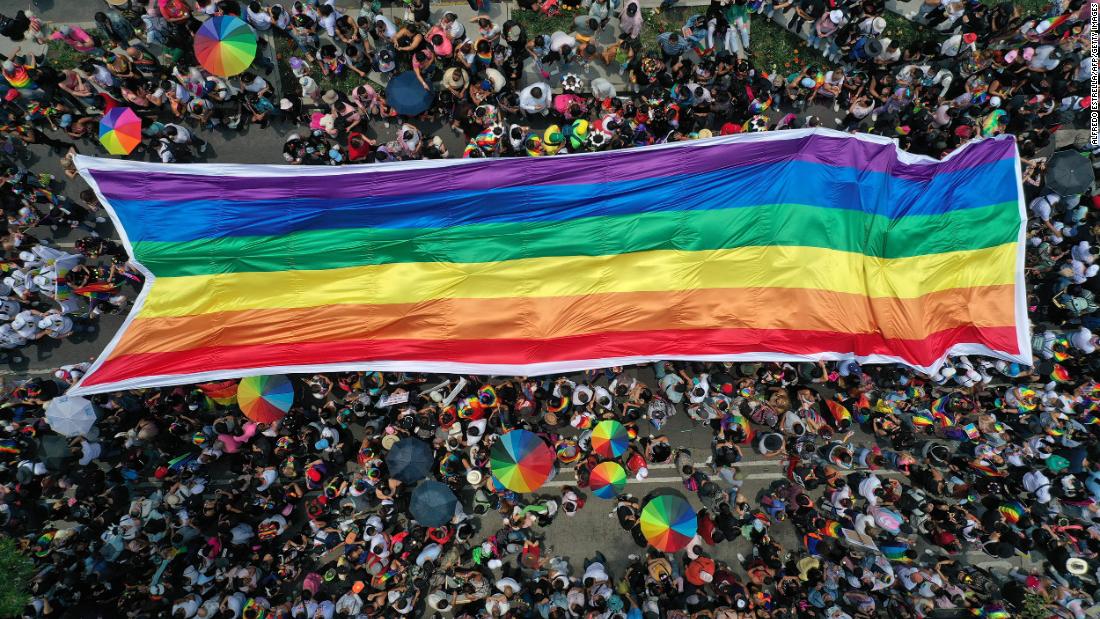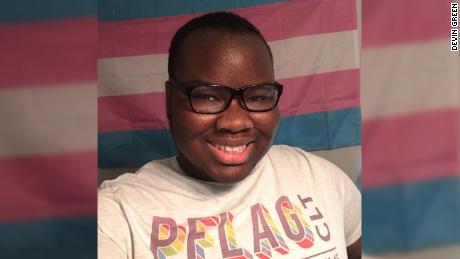So it’s as good a time as ever for allies to learn how to better support their LGBTQ loved ones and understand more of the diversity that exists within the broader LGBTQ community. More than 20 million Americans identify as LGBTQ, according to a 2021 analysis of census data by the Human Rights Campaign, and it’s a pivotal time to protect and expand LGBTQ rights.
Political narratives often paint religion and LGBTQ experiences as exclusive, and Christian faith-based arguments are often used to oppose rights like same-sex marriage. In spite of this, many LGBTQ people say they are religious, and some of the biggest mainstream Christian denominations openly affirm LGBTQ members and ordain them as spiritual leaders.
About 47% of LGBT adults said they were religious, according to a 2020 report from the Williams Center, UCLA Law’s LGBT-focused public policy research center. (The report was based on data collected between 2015 and 2017, though, so it’s likely these figures have changed.) That figure reached 65% among older LGBT adults, the report found.
Black LGBT adults, as well as those in the South, were even more likely to be religious (71% and 54.1%, respectively), the report found. All together, that’s more than 5 million LGBT adults in the US who described themselves as religious.
Sarah TevisTownes, an ordained minister in the United Church of Christ, is one of a large group of Christian clergy who supports a Biblical case for affirming LGBTQ people. (The Reformation Project, a Christian organization, is one of the leaders of this movement.)
“The early church affirmed women, and recognized gender beyond the binary,” TevisTownes tells CNN. “Today, most mainline Christian denominations affirm LGBTQ people. But the church has made a lot of mistakes, and in other Christian practices, there is no accountability.”
Many LGBTQ people want marriage and families
The federal legalization of same-sex marriage in 2015 — often referred to now by the name of the plaintiff in that landmark case, Obergefell — was a massive watershed moment for LGBTQ rights and for LGBTQ couples ready to marry. Around one in 10 LGBT adults in the US are married to a same-sex spouse, Gallup reported in 2021.
“After Obergefell, LGBTQ people reported being happier and more satisified with their lives, and today 63% of cohabitating LGBTQ couples are married, showing that LGBTQ couples will seek marriage if given the option,” says Sarah Kate Ellis, president and CEO of GLAAD, the LGBTQ media advocacy organization.
Additionally, about 77% of LGBTQ adults, ages 18 to 35, are parents already or say they want children in the future, according to Family Equality, a nonprofit that aims to extend legal protections for LGBTQ families.
“All of this shows that when people have rights, they use them,” Ellis adds.
But since the LGBTQ population includes members of Gen Z and millennials, both young generations who, in the case of millennials, are increasingly delaying marriage, younger LGBTQ people may not be thinking about marriage, and this could impact overall percentages of married LGBTQ couples, says Kerith Conron, research director at the Williams Institute.
There are different ways for trans people to transition,and not all of them are medical
In pursuit of living a more authentic life, some (but not all) trans and nonbinary people may change their clothing, appearance, pronouns or name. Any or all of these may constitute a person’s transition. A lot of rhetoric questioning the validity of transgender experiences focuses on surgical or medical transitioning, but Conron points out that social transitioning – changes that are not medical — can be just as important.
“Many people haven’t initiated hormone therapy and even fewer have had other medical procedures — sometimes due to lack of interest in such a procedure,” Conron tells CNN.
Access to gender-confirming procedures and medical care is essential for trans communities and, in terms of mental health, can be life-saving. A study published this year, led by Stanford University School of Medicine and based on data from the most recent US Transgender Survey, conducted in 2015, found that trans adults who started hormone treatments as teenagers were less likely to experience thoughts of suicide compared to those who wanted, but never accessed, hormone treatments.
Another study published this year of over 100 trans and nonbinary young people found that receiving gender-affirming health care was associated with 60% lower odds of depression and 73% lower odds of suidicality over the following year.
Cost and accessibility, as well as discrimination within the health care system, are big reasons why transgender people may not seek gender-affirming medical procedures. And some trans people are able to live fully in their gender identity without it.
Sex has never been binary
While “transgender” is a relatively new term, dating back to the mid-1900s, records from ancient civilizations the world over contain evidence of people and groups who lived their lives and expressed themselves in ways that were outside the social norms of the sex they were assumed to have — or even outside of the male-female sex binary altogether.
Intersex people are just one example. Up to 1.7% of the population are born with anatomy, chromosomes and hormone function that are outside the typical notions of male and female bodies, according to the UN. Because these variations occur naturally, there is every reason to believe they have existed throughout history — even before science had the tools and the language to identify them — and even in societies that were intolerant.
But as awareness of the natural diversity within sex and gender has increased, data has also begun to reflect more of these experiences.
“More surveys are starting to count transgender people, which creates a sense that transgender people are a new population,” says Conron of the Williams Institute. “However, this is not the case. Visibility is increasing.”
The US Census Bureau didn’t start collecting official data on sexual orientation and gender identity until 2021. In recent history, the lack of data on transgender individuals has hampered attempts to create a full picture of the trans community in the US — and also presents issues when, say, investigating crimes against transgender people.
Historians like Susan Stryker and Jules Gill-Peterson have published comprehensive works that explore the recorded history of trans people, with some stories dating back several decades before the term “transgender” came into common use, and organizations like the National Center for Transgender Equality have led efforts to survey trans Americans to create a more complete picture of the population.
“That’s where the history accounts are the most important resource to look back and get perspective on history of transgender presence, and think about different terminologies and ways people express themselves,” Conron says.
There is strength in visibility, but visibility is not enough
In a February poll, Gallup found that more people self-identified as lesbian, gay, bisexual, transgender — or “something other than heterosexual” — on an anonymous survey conducted in 2021 than any other point in the last decade, a change largely driven by young people.
Around 21% of 18- to 24-year-olds — the Gen Z demographic — identify as LGBTQ, the Gallup poll found. Among Gen Z, bisexual is the most common identifier — about one in six Gen Z young people identify this way, per Gallup.
“Being LGBTQ is not new, but many of the equal rights that we have as LGBTQ people today are new. For decades, we’ve fought to increase representation and visibility not just in media but also in the workplace, in schools, and everywhere that LGBTQ people spend our lives,” says Ellis.
“Because of so many hard-won advances, people coming out as LGBTQ today can do so with less fear of repercussions and more confidence in the future of their relationships, families, and careers.”
However, Ellis expressed concern that a rise in recent anti-LGBTQ activity across the US could erode that feeling of confidence. About 70% of LGBTQ people reported experiencing targeted discrimination in 2021, according to a 2021 report from GLAAD — a 24% rise since 2020.
And in states across the country, there has been a wave of new legislation restricting the rights of trans people. More than 58,000 transgender youth 13 and older across the US are facing restricted access or proposals, and could soon lose access to gender-affirming care, according to UCLA’s Williams Institute.
“We aren’t going back in the closet,” Ellis says. “But with that visibility does come the backlash we are seeing now.”


